

Discover more from AutoMarketplace
TLC Fleet Analysis, The End of Plate Storage & The New TLC Plate Status Quo
It's been >3 years since the FHV License Pause (aka TLC Plate Cap) & >6 months since the EV exemption to the Plate Cap was removed. What do the numbers look like ahead of next FHV License Pause review
AutoMarketplace NYC covers the for-hire transportation industry and automotive news. Check out AutoMarketplace.com on YouTube ▶️
HAPPY NEW YEAR! 🎇🎉
2022 is going to be a busy year for AutoMarketplace as we launch a marketplace we think the NYC driver & fleet community will find useful (more to come on that soon). We will also continue to expand our content, both the newsletter and YouTube 📽️, to help keep our readership & community informed and educated about the NYC automotive-mobility landscape (term we use for all things NYC automotive, TLC, for-hire transport, rideshare, etc).
It goes without saying that without you, our community, we are nothing. Thank you for all the support you showed us in 2021 and we hope to continue to deliver content that is useful to you. We also have some surprises in store for the community this year. Make sure you’re subscribed!
Rise of the New TLC Plate Status Quo
For our first 2022 piece we thought it would be helpful to do some data analysis that gives insight into the current state of the NYC TLC vehicle fleet. Remember the next bi-annual FHV License Pause (aka TLC Plate Cap) review will occur in February, with a report most likely published in March.
We think a TLC Plate “Status Quo” will now take hold for a several reasons:
It’s been more than three years (August 2018) since the FHV License Pause (aka TLC Plate Cap) was implemented.
It’s been more than six months since the EV exemption to the TLC Plate Cap was removed (coinciding with Revel’s all-Tesla rideshare service launch).
The next FHV License Pause review will be the 4th consecutive report issued. The FHV License Pause review mechanism and report has quickly established itself as an industry standard.
The effective resolution of the NYC Yellow Taxi Medallion debt crisis via a major financial restructuring, including a City-backed guarantee of Medallion debt. In other words, the City is directly incentivized to protect the value of the Medallion. One way to protect the Medallion’s value will presumably be via protecting its scarcity value by limiting the further issuance of TLC plates.
The NYC Black Car & Livery Task Force findings and recommendations after more than six months of study sets out clear strategic goals for the broader NYC FHV industry.
NYC congestion pricing politics will likely provide further justification to limit the supply of for-hire vehicles in NYC.
A new City political administration (i.e., Mayor Eric Adams took office on Jan 1) should provide clear regulatory visibility for the next few years. It’s also noteworthy that several prominent politicians directly and indirectly associated with the TLC community will be in prominent positions. Current TLC Chair Aloysee Heredia Jarmoszuk will remain in her position and Ydanis Rodriguez, who also happens to be a former livery driver, will be the Commissioner of the City’s Department of Transportation (DOT).
We also believe the FHV License (aka TLC Plate) storage option will be removed soon. The TLC Plate storage option allowed drivers and fleets to temporarily “store” their FHV Licenses during the pandemic as a way to keep their FHV License active, while saving money on expensive commercial vehicle insurance, if they weren’t using their cars actively. Given the recent financial support provided to the NYC yellow cab medallion industry and a renewed focus on reducing car congestion in the City, we predict the TLC will remove the ability to store plates as the pandemic (hopefully) comes to an end. Basically, limiting the amount of for-hire cars (and cars generally) driving in the City is going to be a political/environmental priority from now until the foreseeable future. We’ll talk about this dynamic in more detail in future articles.
NYC TLC Plate Stats
Below we provide an overview of the current NYC TLC vehicle fleet with separate standalone analysis of specific sectors. Note the below excludes NYC yellow cabs.
Total TLC Plates
Key Highlights:
Current TLC Plate numbers are back to 2017 levels or roughly one year before the August 2018 FHV License Pause (aka TLC Plate Cap).
TLC Plate supply topped out at a little over 120,000 in early 2019. This might be counterintuitive as the FHV License pause went into effect in August 2018. The reason TLC Plate supply peaked in early 2019 related to vehicle applications stemming from before the “Plate Cap” still being processed for months after August 2018 (i.e., there was a rush in August 2018 to register TLC Plates).
TLC Plate numbers were steadily declining before the pandemic. The decline accelerated as drivers/fleets put their plates into storage or permanently retired their TLC Plates. There are no official stats on how many FHV Licenses remain in storage, but it’s likely safe to say total active TLC Plates will level off between 90,000 to 100,000 TLC plates, a 20%+ decline from all-time highs.
While trip demand remains below pre-pandemic highs (we’ll will write about this more in future articles), a 20% supply reduction in TLC-plated vehicles implies trip demand would only need to return to ~80% pre-pandemic for driver earning opportunities to be similar (i.e., 20% supply reduction means only 80% demand would need to come back for the same trip demand/vehicle supply ratio to exist).
AutoMarketplace Notes: If you are a NYC TLC driver or fleet DO NOT retire your TLC Plates if you plan to remain in the industry. Remember, you CANNOT sell an FHV License/TLC Plate registered to an individual (i.e., it’s not a taxi medallion), but you can sell a business that has FHV Licenses/TLC Plates associated with it. Note, if you individually have access to an FHV license and want to rent out a TLC-plated car to another driver, you may still be held liable for any accidents that occur even though you may not be driving the car. You may also hear more news related to “One Driver, One Plate”, but those politics seems tricky given taxi medallion values are heavily correlated to their perceived scarcity value. With the recent taxi medallion financial restructuring that included a City-backed guarantee on Medallion debt, it seems highly unlikely that TLC officials would institute a “One Driver, One Plate” policy at risk of collapsing Medallion prices. Another topic that may gain more media attention is “Lease Caps” on fleet companies to prevent price gouging on TLC vehicle rentals.
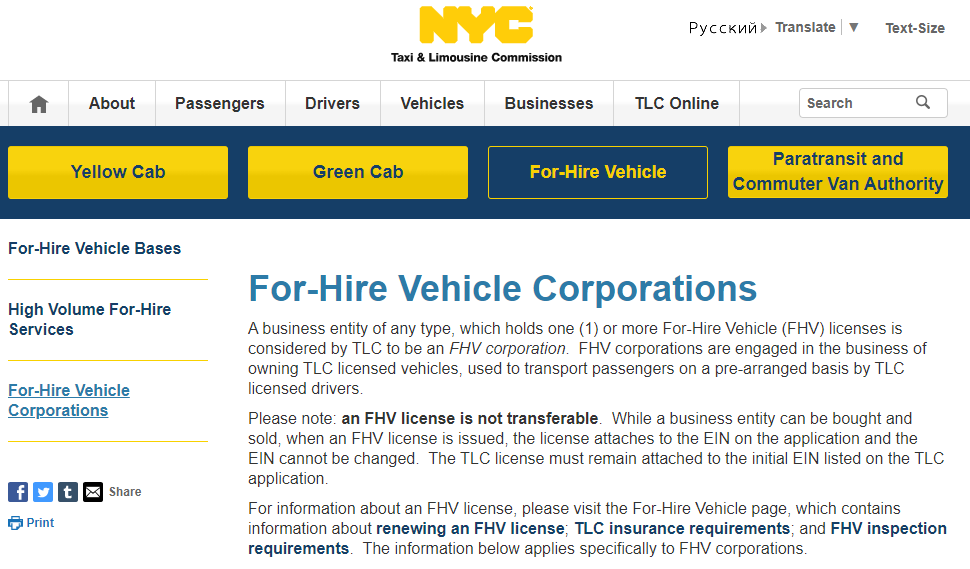
TLC Plates by Vehicle Type
Key Highlights:
After the electric vehicle (EV) exemption to the TLC Plate Cap was removed in June 2021, Wheelchair Accessible Vehicles (WAVs) are currently the only way for TLC drivers or fleets to add new for-hire cars.
AutoMarketplace Notes: WAV growth continues to compound at high levels, more than doubling over the last two years. If WAV growth continues at a rapid pace it wouldn’t surprise us if the WAV exemption is also removed, leaving no exemption to the FHV License Pause (TLC Plate Cap). WAVs currently make up 3.6% of the entire non-yellow cab TLC fleet.
Key Highlights:
After the electric vehicle (EV) exemption to the TLC Plate Cap was removed in June 2021, EVs have continued to increase at a fairly rapid pace. increasing by over 40% over the last six months.
EVs only represent less than 1% of the total non-yellow cab TLC fleet, but continue to gain share even with the EV exemption removed.
AutoMarketplace Notes: We believe EV adoption in the NYC for-hire transport industry will be driven by the yellow cab industry. From the TLC-sponsored yellow taxi EV pilot to the need to reinvent the industry post the rise of Uber/Lyft, our guess is significant EV adoption will first be seen among yellow cabs (it also helps yellow cab garages have the financial resources to experiment with EVs vs. individual drivers). As EV charging and service infrastructure is built out, individual owner-operators will also be willing to make the EV switch, but it could remain cost prohibitive for the next several years.
TLC Plates by Base Affiliation
Key Highlights:
Most non-yellow cab TLC-plated cars are unsurprisingly affiliated with Black Car bases. Vehicles can have different Black Car base affiliations, but can still perform for-hire trips for other Black Car bases (often referred to as cross-base dispatching rights). In other words, a TLC-plated vehicle can be affiliated with an Uber base, but still do work for Lyft or another “traditional” Black Car base.
Uber has an over 80% share of all Black Car base vehicle affiliations. Given its market share dominance the only surprise about this stat is Lyft doesn’t command a large Black Car base affiliation share, implying Uber onboarded the vast majority of app-based drivers in NYC (i.e., a driver may work mostly for Lyft, but his/her vehicle is affiliated with an Uber base).
AutoMarketplace Notes: One recommendation of the recent Black Car & Livery Report was to allow “traditional” Black Car bases to add vehicles that would be able to exclusively work for a specific base (i.e., no cross-base dispatching rights). Essentially, adding an exemption to the FHV License Pause (aka TLC Plate Cap), so “traditional” Black Car bases could add more cars if they need to (i.e., win more business). Vehicles affiliated with “traditional” Black Car bases are generally not blamed for the addition of too many cars to the NYC TLC fleet.
Key Highlights:
With the rise of Uber/Lyft, TLC-plated vehicles affiliated with Livery Bases (often referred to as Community Car Services) have significantly declined.
Although TLC-plated vehicles affiliated with NYC Livery Bases have declined by more than 50% since early 2019, the decline seems to be levelling off.
AutoMarketplace Notes: Similar to the commentary above for the “traditional” Black Car industry, the NYC Livery industry is also seeking a carve out to the TLC Plate Cap with “Livery-only” base affiliations, so that’ll also be something to track. The other notable detail here is livery base dispatches could potentially have certain sales tax benefits (i.e., exempt from New York State’s 8.875% sales tax on for-hire trips), which could give them a structural advantage in offering cheaper fares. However, more research is needed on the specifics of when the sales tax exemption applies and doesn’t.
Key Highlights:
Interestingly ~30% of NYC TLC-qualified Luxury Limo (i.e., able to do luxury limo work within the 5 boroughs) vehicles actually have New Jersey “OL” limousine plates! The actual figure may even be higher given some New Jersey OL plates are customized and don’t begin with letters OL.
Luxury Limo bases usually carry $1 million+ commercial liability insurance, which is required by some corporations or high end clientele. The upside to having such insurance is you can qualify for lucrative “luxury” work. The downside is the insurance is usually prohibitively expensive (i.e., even a clean record with CDL license can have an annual premium in excess of $8,000 per year). and is offered by only a handful of companies.
AutoMarketplace Notes: INSURANCE. INSURANCE. INSURANCE. This is the primary explanation, outside of the rise of Uber and Lyft luxury services, to explain why the number of vehicles affiliated with Luxury Limo bases have declined over 60% (!) since early 2019. Many non-corporate or VIP clientele may also not appreciate the nuances of $1 million+ insurance so may also be increasingly opting to arrange luxury car services from Uber and Lyft. As the Black Car & Livery Task Force highlighted, providing an affordable $1 million+ insurance option for the Luxury Limo sector is something that needs to be studied and prioritized.
Does anything surprise you about the data above? What did you find most interesting? What would you like more analysis on? Let us know by commenting below or e-mailing us at info@automarketplace.com
AutoMarketplace NYC covers the for-hire transportation industry and automotive news. Check out AutoMarketplace.com on YouTube ▶️


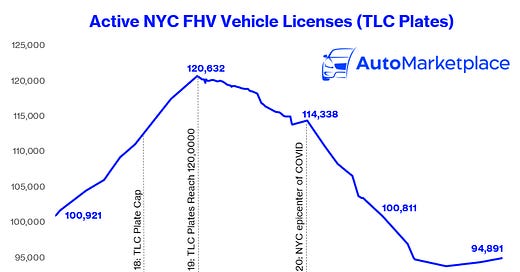





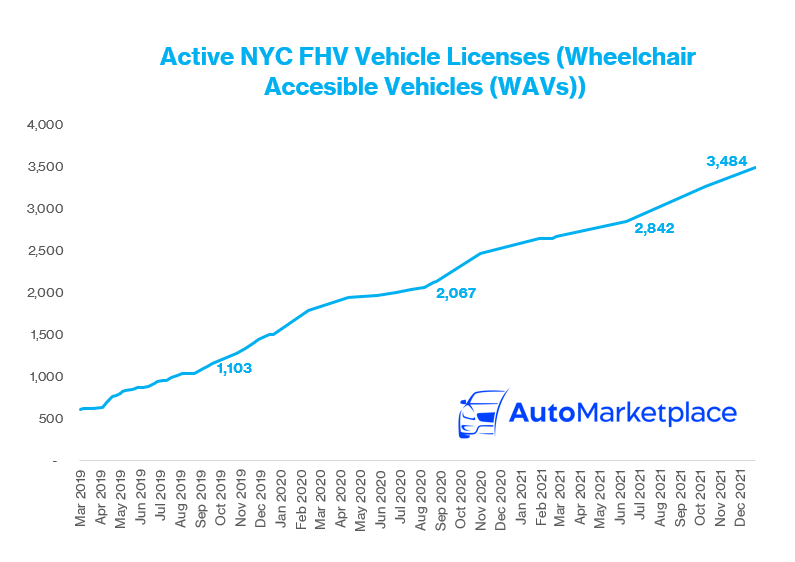
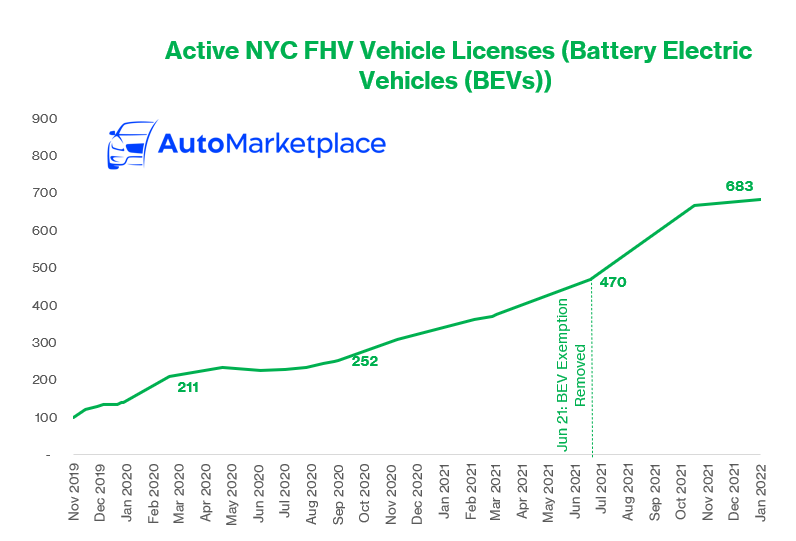
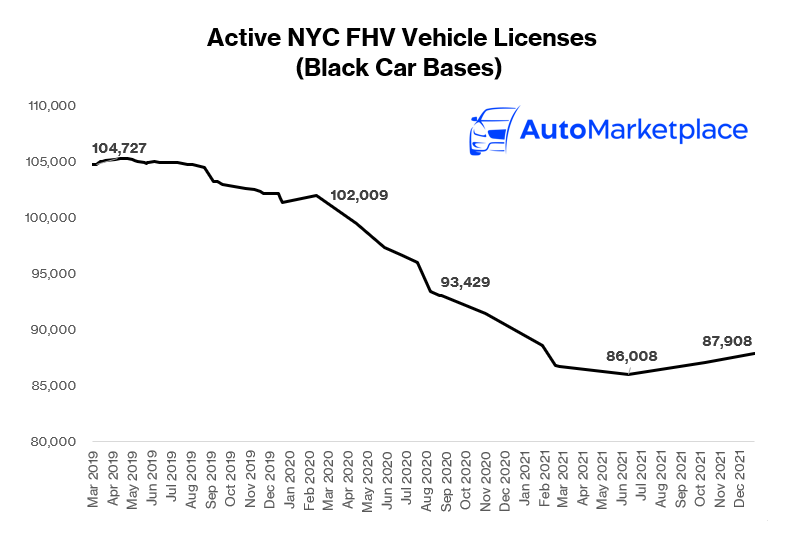

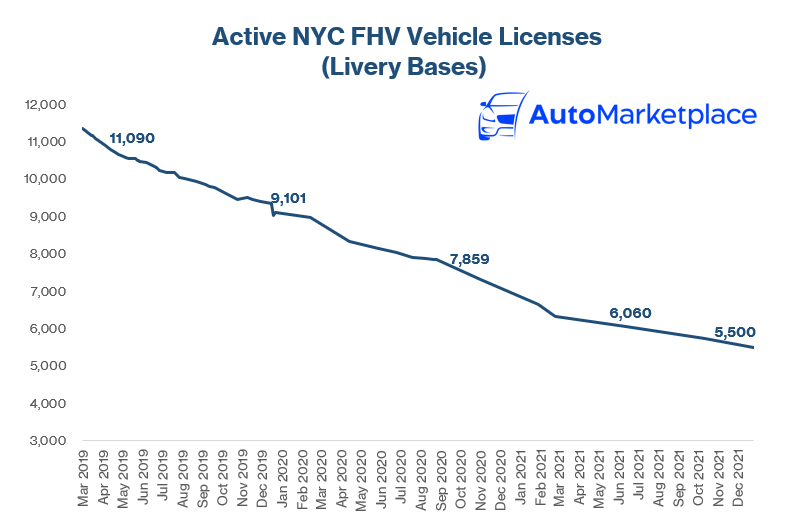

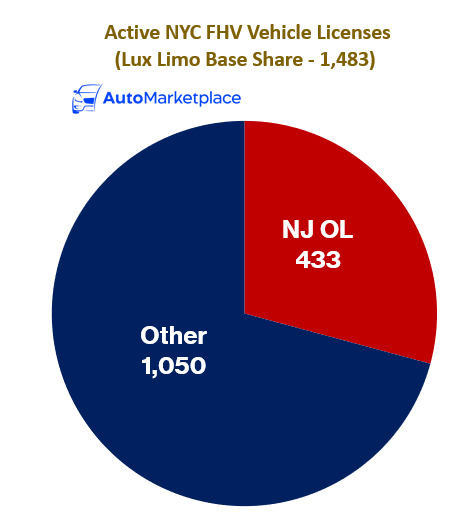



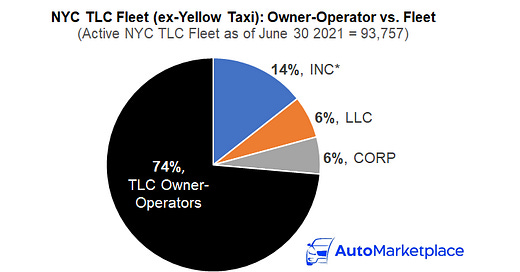



The fact is that pre arranged rides are safer and easier and uber and lyft drivers go where ever customers want. We dont just stay in manhattan. We should be able to have the vehicle we want because we provide a better service than yellow cabs whether its convenience or a more comfortable safer ride with drivers who care about their account and their vehicle so were not driving recklessly. From having options to ride by your self or a group of friends or your family you can choose the option best for you not just anything that comes along. Lease to own option is a easy way to have a tlc car but its not the best you are limited to what you can get and do and pay. Theres no yellows or greens cabby in abundance in the bronx or bk and people still need rides. Lift the pause we should come together to vote against its not fare like tolls